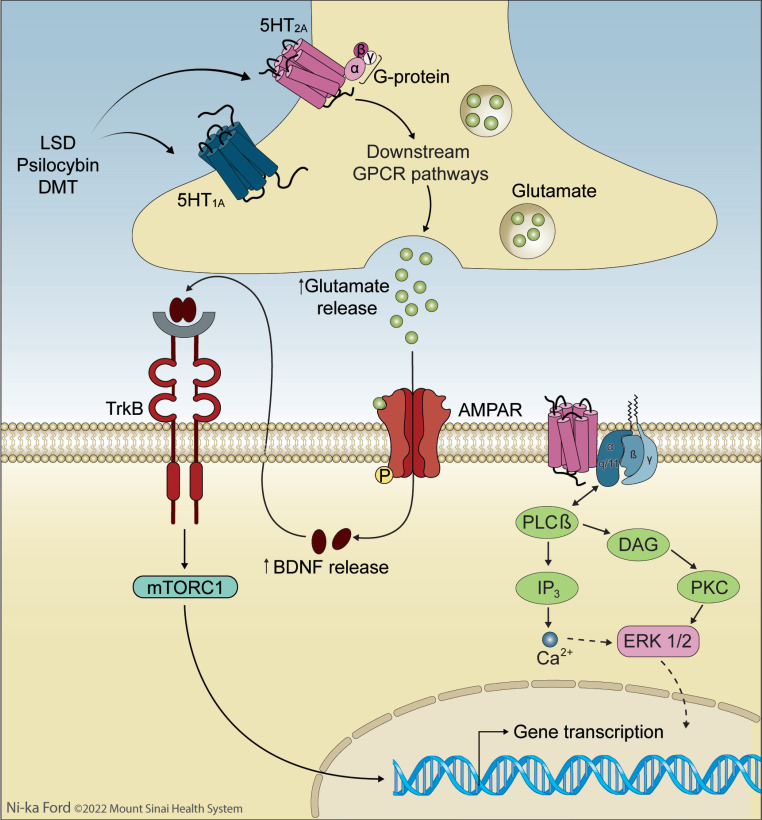Fig. (5).
Molecular mechanisms of classic psychedelics. Serotonergic psychedelics activate 5-hydroxytryptamine 2A (5-HT2A) receptors, causing glutamate release and alpha-amino-3-hydroxy-5-methyl-4-isoxazolepropionic acid (AMPA) potentiation. The resulting release of brain-derived neurotrophic factor (BDNF) activates tropomyosin-related kinase B (TrkB) receptors, ultimately resulting in activation of the mechanistic target of rapamycin complex 1 (mTORC1) signaling pathway and increasing expression of synaptic proteins [530]. Classic psychedelics also bind to the G protein-coupled receptors (GPCR) 5-HT2A receptors on the post-synaptic cell, activating downstream cascades. One of these cascades is the Gq-mediated response pathway, leading to production of phospholipase C (PLCβ) that catalyzes the production of second messengers inositol-1,4,5-trisphosphate (IP3) and diacylglycerol (DAG), in turn activating protein kinase C (PKC) and then extracellular signal-regulated kinase 1/2 (ERK1/2) to mobilize intracellular calcium and, eventually, changes in gene expression. This and other intracellular pathways are part of the pro-neuroplastic effects of classic psychedelics [531].

